Native Traktor Kontrol S3 MK1 User manual
- Category
- DJ controllers
- Type
- User manual
This manual is also suitable for


Table of Contents
1. Disclaimer .................................................................................................................. 1
2. Welcome to TRAKTOR KONTROL S3 ......................................................................... 2
2.1. Document Conventions ..................................................................................... 2
3. Setting up TRAKTOR KONTROL S3 ............................................................................ 3
3.1. Connecting to the Computer .............................................................................. 3
3.2. Connecting an Amplification System .................................................................. 3
3.3. Connecting Monitors for DJ Booth ..................................................................... 4
3.4. Connecting Headphones ................................................................................... 4
3.5. Connecting to the Power Supply ........................................................................ 4
3.6. Final Preparation .............................................................................................. 4
3.7. Importing Music into the Track Collection ........................................................... 6
4. TRAKTOR KONTROL S3 Overview ............................................................................. 7
4.1. Decks .............................................................................................................. 8
4.1.1. Browse Controls ..................................................................................... 9
4.1.2. Pad Section ......................................................................................... 10
4.2. Mixer ............................................................................................................. 10
4.2.1. Mixer Channel ...................................................................................... 13
5. Tutorials ................................................................................................................... 15
5.1. Mixing Your First Tracks using Sync ................................................................. 16
5.1.1. Prerequisites ........................................................................................ 16
5.1.2. Loading the First Track into Deck A ....................................................... 16
5.1.3. Starting Playback of Deck A .................................................................. 17
5.1.4. Loading the Second Track into Deck B ................................................... 18
5.1.5. Syncing the Track Tempos .................................................................... 18
5.1.6. Starting Playback of the Second Track ................................................... 19
5.1.7. Mixing in the Audio Signal ..................................................................... 19
5.2. Browsing and Loading Tracks .......................................................................... 20
5.3. Controlling Track Playback .............................................................................. 21
5.4. Previewing Tracks using the Cue Channel ....................................................... 22
5.5. Adjusting Volume Levels ................................................................................. 22
5.6. Using the Equalizer to Tweak Your Sound ........................................................ 23
5.7. Adjusting Track Tempo .................................................................................... 23
5.8. Locking the Key of Tracks ............................................................................... 24
5.9. Playing with Mixer Effects ................................................................................ 24
5.10. Playing with Cue Points ................................................................................. 25
5.11. Playing with Loops ........................................................................................ 26
5.12. Mixing Tracks Using Jog Wheels ................................................................... 27
5.12.1. Prerequisites ...................................................................................... 27
5.12.2. Loading the First Track into Deck A ...................................................... 27
5.12.3. Starting Playback of Deck A ................................................................ 28
5.12.4. Loading the Second Track into Deck B ................................................. 29
5.12.5. Syncing Tracks Manually ..................................................................... 30

5.12.6. Cuing the Next Track using the Jog Wheels ......................................... 33
5.12.7. Mixing in the Next Track ...................................................................... 34
5.13. Using Flux and Reverse Modes ..................................................................... 34
5.14. Working with the Preparation List ................................................................... 35
5.15. Correcting Beatgrids of Tracks ....................................................................... 35

1. DISCLAIMER
The information in this document is subject to change without notice and does not represent a
commitment on the part of Native Instruments GmbH. The software described by this document is
subject to a License Agreement and may not be copied to other media. No part of this publication
may be copied, reproduced or otherwise transmitted or recorded, for any purpose, without prior
written permission by Native Instruments GmbH, hereinafter referred to as Native Instruments.
“Native Instruments”, “NI” and associated logos are (registered) trademarks of Native Instruments
GmbH.
Mac, macOS, iPad, Logic and iTunes are registered trademarks of Apple Inc., registered in the
U.S. and other countries.
Windows and DirectSound are registered trademarks of Microsoft Corporation in the United States
and/or other countries.
All other trademarks are the property of their respective owners and use of them does not imply
any affiliation with or endorsement by them.
Document authored by: Native Instruments
Software version: 3.3 (12/2019)
Hardware version: TRAKTOR KONTROL S3
Special thanks to the Beta Test Team, who were invaluable not just in tracking down bugs, but in
making this a better product.
Disclaimer
1

2. WELCOME TO TRAKTOR KONTROL S3
Thank you for choosing TRAKTOR KONTROL S3, it is because of customers like you that we can
continue developing groundbreaking music software and hardware. TRAKTOR KONTROL S3 is a
fully integrated hardware and software DJ performance system tailored for both TRAKTOR PRO 3
and TRAKTOR DJ 2.
This documentation provides you with all the information you need to get started mixing, syncing
and looping. If you are already familiar with TRAKTOR, this guide will also help you use the more
advanced features of TRAKTOR KONTROL S3.
In addition to this manual, we have provided you with a collection of other learning resources:
To get to know TRAKTOR PRO 3 in detail, check out the manual.
To get a quick introduction to 4-channel mixing and tips from the pros read this blog post.
To learn how to use TRAKTOR DJ on iPad visit this guide.
2.1. Document Conventions
This document uses particular formatting to point out special facts and to warn you of potential is-
sues. The icons introducing the following notes let you see what kind of information can be expec-
ted:
The speech bubble icon indicates a useful tip that may help you to solve a task more
efficiently.
The exclamation mark icon highlights important information that is essential for the
given context.
The warning icon warns you of serious issues and potential risks that require your
full attention.
Furthermore, the following formatting is used:
▪ Paths to locations on your hard disk or other storage devices are printed in italics.
▪ Important names and concepts are printed in bold.
▪ Square brackets are used to reference keys on a computer’s keyboard, e.g., Press [Shift] +
[Enter].
Welcome to TRAKTOR KONTROL S3
2

3. SETTING UP TRAKTOR KONTROL S3
To configure the S3 for use, you should have already installed TRAKTOR PRO 3 software using
NATIVE ACCESS. If this is not the case, follow the instructions under this link Registering and In-
stalling a Native Instruments Product using NATIVE ACCESS.
This section describes how to set up the TRAKTOR KONTROL S3. When all devices are connec-
ted your setup will look like a typical setup as depicted in the following illustration:
TRAKTOR KONTROL S3 setup.
3.1. Connecting to the Computer
To connect the TRAKTOR KONTROL S3 to your computer:
1. Connect the device end of the included USB cable to the USB socket on the rear panel of
your S3.
2. Connect the computer end of the USB cable to an available USB 2.0 port (or later) on your
computer.
3.2. Connecting an Amplification System
To connect your power amplifier system to the TRAKTOR KONTROL S3:
• Connect the MAIN OUT XLR or RCA outputs on the rear panel of the TRAKTOR KONTROL
S3 to the inputs of your amplification system using the appropriate cables.
Setting up TRAKTOR KONTROL S3
3

3.3. Connecting Monitors for DJ Booth
To connect your monitor speakers or a second power amplifier to the TRAKTOR KONTROL S3 for
use in a DJ booth:
• Connect the BOOTH OUT outputs on the rear panel of the TRAKTOR KONTROL S3 to the
inputs of your monitoring system using appropriate cables.
3.4. Connecting Headphones
To connect headphones to the TRAKTOR KONTROL S3:
• Connect your headphones to the PHONES OUT socket on the front panel of the TRAKTOR
KONTROL S3 using a 1/4" or a 1/8" connector.
3.5. Connecting to the Power Supply
To connect the Power supply to the TRAKTOR KONTROL S3:
1. Connect the device end of the power supply cable to the power socket on the rear panel of
your S3.
2. Connect the power supply unit to a power outlet.
3.6. Final Preparation
After successfully setting up the TRAKTOR KONTROL S3 system, you need to complete the final
steps before you can start using your S3. First, switch on your devices and then configure the
TRAKTOR software to be used with your S3.
Switching on Devices and Starting TRAKTOR
You can now switch on the devices. We recommended that you follow the order in the instructions
below:
1. On your S3 turn down the volume controls to the minimum position by using the MASTER
knob, the BOOTH knob, and the VOL knob.
2. Switch on your amplification system.
3. Switch on your computer.
4. Switch on your S3.
5. Start TRAKTOR by double-clicking the TRAKTOR application icon on your desktop.
The TRAKTOR software opens.
Importing Data from Your Previous TRAKTOR Version
When you start TRAKTOR for the first time, TRAKTOR checks if a previous version of TRAKTOR
is installed on your system. In this case, TRAKTOR asks if you want to import your previous data
from the existing user content into a new folder in your user folder. Your previous data will not be
changed if you import it to the new default folder.
If you want to import data from your previous TRAKTOR installation:
Setting up TRAKTOR KONTROL S3
4

• Click Yes to confirm.
The data is imported.
Switching to TRAKTOR Default Settings
When you start TRAKTOR with the S3 for the first time, TRAKTOR asks if you want to switch Mix-
er FX selection and the Tempo fader range to the default setting. This is necessary to get the in-
tended user experience of your S3:
• Click Yes to switch to the default settings.
The Mixer FX and the TEMPO fader range are set to default settings.
Configuring TRAKTOR using the Setup Wizard
The Setup Wizard dialog appears automatically when you start TRAKTOR for the first time after
installation. The Setup Wizard helps you to configure the software to your needs only with a few
clicks. To configure TRAKTOR to be controlled with your S3 controller, perform the following ac-
tions:
1. On the WELCOME page of the Wizard, click Next to proceed.
2. On the DECK LAYOUT page select the Deck setup to control with your S3, for example, 2
Track Decks + 2 Remix Decks.
3. Click Next to proceed.
The SUMMARY page shows you the configuration of TRAKTOR.
4. Click Finish to confirm your configuration.
The TRAKTOR window now appears in the Essential layout.
Setting up TRAKTOR KONTROL S3
5

3.7. Importing Music into the Track Collection
You can import your music into TRAKTOR's Track Collection in several ways. You can drag and
drop your music files from your computer into the Track Collection, you can use the context menu
in the Browser tree to import the music from your local music folders, and you can use the context
menu to import Remix Sets.
Importing Music using Drag and Drop
To import your music files into your Track Collection using drag and drop:
• Drag the music files from the location on your computer and drop them in the Track Collec-
tion folder in TRAKTOR's Browser tree.
TRAKTOR now analyzes the music files and imports the metadata into the Track Collection.
Importing Music Folders using the Context Menu
To import your music from your local music folders into the Track Collection:
1. Right-click the Track Collection root folder in the folder tree to open the context menu.
2. Select Import Music Folders.
TRAKTOR now analyzes the music files in the local music folders and imports the metadata
into the Track Collection.
The local music folders can be added to the File Management Page in the Preferences.
Setting up TRAKTOR KONTROL S3
6

4. TRAKTOR KONTROL S3 OVERVIEW
This section introduces you to the TRAKTOR KONTROL S3 and all its control elements and con-
nectors.
(1) Decks: You can use the Decks to control tracks and Samples, similar to DJ turntables or CD
players but with additional features. TRAKTOR controls four virtual Decks and each of them can
be operated in several Deck Types.
TRAKTOR provides you with four virtual decks. The two Decks on your S3 hardware controller al-
low you to control the four software Decks A, B, C and D in TRAKTOR: the left Deck on your S3
controls Decks A and C in the software. The right Deck on your S3 controls Decks B and D in the
software. For more information on the Deck control elements, refer to Decks.
(2) Mixer: You can use the Mixer to mix the audio signals coming from the Decks. The Mixer sits in
the middle of the TRAKTOR software as well as on your TRAKTOR KONTROL S3 controller. On
the S3, the Mixer consists of the four Mixer channels A, B, C, and D which receive the individual
audio signals from the corresponding Decks. Each Mixer channel contains controls to modulate
the audio signal and to adjust the outgoing volume before the audio signal is sent to the MASTER
output. Furthermore, the Mixer provides a crossfader to let you fade between the audio signals in
the Mixer channels.
For more information on the Mixer control elements, refer to Mixer.
TRAKTOR KONTROL S3 Overview
7

4.1. Decks
TRAKTOR KONTROL S3 provides you with two physical Decks to control the TRAKTOR Decks.
Each Deck provides you with the following control elements:
(1) Browse controls: Allow you to scroll through the Track Collection to find and load tracks, as
well as previewing tracks and preparing playlists.
(2) Jog Wheel: The Jog Wheel provides advanced control over track transport. As with a conven-
tional CD player or turntable, you can manually hold playback, nudge and bend, and start scratch-
ing by touching and turning the Jog Wheel and the outer rim. Furthermore, you can manually cor-
rect the tracks' Beatgrids.
(3) KEYLOCK button: Lock the track's current key value. When you then move the TEMPO fader
up or down, you change the track tempo but the track's key remains at the locked value.
(4) SYNC (Lock): Syncs the Deck to the Tempo Master. Using SHIFT and SYNC (Lock) locks the
TEMPO fader for the Deck.
(5) TEMPO fader: Lets you manually adjust the track tempo on that Deck. The TEMPO fader can
be operated in Absolute mode and in Relative mode. If the Deck is synced to the Tempo Master,
the TEMPO fader has no effect. When the Deck is playing at the original track tempo, the LED
lights up blue independently from the current TEMPO fader position. When the Deck tempo is fast-
er or slower than the original tempo, the LED is unlit. When the tempo is locked for the Deck, the
LED lights up red.
TRAKTOR KONTROL S3 Overview
8

(6) Pad section: You can use the Pads to store and trigger Cue Points and Loops, and to control
Samples and STEM Files. The individual function depends on the selected Pad mode and on the
selected Deck Type.
(7) Play/Pause: Lets you start or pause the track playback on that Deck. The button brightly lights
up green during playback.
(8) CUE: Lets you start track playback from the Floating Cue Point when the Deck is stopped.
Moves the playback position back to the Cue point during playback.
(9) SHIFT: When you hold SHIFT, you are provided with the secondary functions of some control
elements on the S3.
(10) DECK SELECT buttons: Allow you to switch between TRAKTOR Decks A and C on the left
Deck, and between TRAKTOR Decks B and C on the right Deck.
(11) JOG button: Enables JOG mode (Jog Wheel mode) for the Jog Wheel.
(12) GRID button: Enables GRID mode to manually correct the beatgrid for the current track using
the Jog Wheel.
(13) MOVE encoder: Allows you to jump within the track. When looping is enabled, the MOVE
encoder allows you to move the Loop forward and backward in the track.
(14) PAD MODE: Determines whether you are triggering and saving cue points and loops or con-
trolling samples with Pads.
(15) LOOP encoder: Allows you to enable/disable Looping as well as changing the Loop size.
(16) REV button: Plays back the track in reverse when in Flux mode. When you press the REV
button, this automatically enables Flux mode as long as the REV button is pressed.
(17) FLX button: Enables Flux mode for that Deck.
4.1.1. Browse Controls
The Browse controls let you browse the Track Collection to find and load tracks as well as preview
tracks and prepare playlists.
(1) Browse encoder: You select tracks in the Track List by turning the Browse encoder and you
can load the selected track into the Deck by pressing the Browse encoder. You can also use the
Browse encoder to seek within the track that is playing in the Preview Player.
(2) VIEW button: Maximizes or minimizes the Browser view in the TRAKTOR software.
(3) Preparation List button: Assigns a track to the Preparation List.
(4) Star button: When this button is held the Browse encoder then selects favorites.
(5) Preview Player: Loads a track into the Preview Player in TRAKTOR's Browser and plays it
back.
TRAKTOR KONTROL S3 Overview
9

4.1.2. Pad Section
The Pads can be used to store and trigger Cue Points and Loops, as well as to trigger Samples.
The individual function depends on the selected Pad mode as well as on the selected Deck Type.
(1) HOTCUES button: Enables HOTCUES mode. In this mode, you can store and trigger Cue
Points and Loops within tracks using the Pads. On Decks A and B the HOTCUES button lights up
blue whereas on Decks C and D the HOTCUES button lights up orange. The HOTCUES mode is
the default mode for Track Decks.
(2) SAMPLES button: Enables SAMPLES mode. The SAMPLES mode can only be enabled when
the underlying Deck is configured as Remix Deck. Otherwise the SAMPLES button remains unlit.
(3) Pads: Depending on the current Pad mode, the eight Pads have individual functions:
▪ When in HOTCUES mode the Pads store and trigger Cue Points and Loops for Track Decks
and STEM Decks.
▪ When in SAMPLES mode the Pads control the first four SAMPLE Slots of Remix Decks.
4.2. Mixer
Sitting in the middle of the TRAKTOR KONTROL S3 controller, the Mixer receives the audio sig-
nals coming from Decks. There is one channel for each Deck. The Mixer’s purpose is to adjust the
relative level of each channel to generate the mix that is sent to your audience. The Mixer also
provides you with a crossfader, which allows you to make seamless transitions between various
channels.
TRAKTOR KONTROL S3 Overview
10

(1) Mixer Channel A, B, C, D: The Mixer channels receive the individual audio signals from the
Decks. Each Mixer channel contains controls to adjust the audio signal's frequency content and to
adjust the outgoing volume before the audio signal is sent to the MASTER output.
(2) MASTER knob: Adjusts the MASTER signal level.
(3) Master Level Meter: Provides visual feedback on the current Master Output volume level. The
blue LEDs indicate if the signal is below the Headroom area. The red LED indicates if the signal is
clipping. The yellow LEDs indicate if the audio signal is currently within the Headroom area before
the audio signal starts clipping.
(4) BOOTH knob: Adjusts the volume of the Booth output signal for the DJ monitors.
(5) MIXER FX SELECT buttons: Select the MIXER FX to be controlled by the individual MIXER
FX controls in the Mixer channels.
(6) MIX knob: Adjusts the signal mix between the MASTER signal and the CUE channel signal in
the headphones.
(7) VOL knob: Adjusts the level for the CUE channel.
TRAKTOR KONTROL S3 Overview
11

(8) Crossfader: Controls the mix between the Mixer channels’ signals that are assigned to the left
crossfader side and the right crossfader side. At each crossfader’s end, the opposite signals are
totally silent. Moving the crossfader gradually fades in and fades out the relevant audio signal in
the master output. At the center position, both audio signals are fully audible.
TRAKTOR KONTROL S3 Overview
12

4.2.1. Mixer Channel
The Mixer channels receive the individual audio signals from the Decks. Each Mixer channel con-
tains controls to adjust the incoming and outgoing levels, and the audio signal's frequency content.
The Mixer channels provide you with the following control elements:
(1) GAIN knob: Adjusts the input level for the incoming signal of the corresponding Deck, before it
passes the channel fader.
(2) HI knob: Emphasizes, attenuates, or removes the high frequency band of the audio signal.
(3) MID knob: Emphasizes or attenuates the middle frequency band of the audio signal.
(4) LOW knob: Emphasizes, or attenuates, or removes the low frequency band of the audio sig-
nal.
(5) MIXER FX Amount knob: The MIXER FX Amount knob controls the amount of the MIXER FX
to be applied to the audio signal. In center position the MIXER FX is disabled for the individual
Mixer channel.
(6) MIXER FX ON button: Enables or disables the MIXER FX for the individual Mixer channel.
(7) CUE button: Routes the audio signal of the Mixer channel into the CUE channel.
(8) Channel fader: Adjusts the Mixer channel’s level before the audio signal is sent to the cross-
fader and MASTER volume knob.
TRAKTOR KONTROL S3 Overview
13

(9) Channel Level Meter: The Channel Level Meter gives you visual feedback on the current
channel volume. The blue LEDs indicate if the audio signal is below Headroom area. The red LED
indicates if the audio signal is clipping. The yellow LEDs indicate if the audio signal is currently in
the Headroom area before the audio signal starts to clip.
(10) EXT button: Switches the Mixer channel to insert the audio signal coming from the external
audio source.
TRAKTOR KONTROL S3 Overview
14

5. TUTORIALS
The tutorials in this section introduces you the several functions and features of the S3. The follow-
ing list provides you with an overview of the tutorials including the link to it:
▪ Browsing and Loading Tracks: By having your music imported in TRAKTOR, you can use
the Browse controls on the S3 to find tracks for your mix. When loading a track into a Deck,
TRAKTOR starts to analyze the track, calculating its exact tempo and key information. From
this analysis, TRAKTOR creates the Beatgrid and the Waveform. This information is then stor-
ed for the track in the Track Collection. For more information, refer to Browsing and Loading
Tracks.
▪ Controlling Track Playback: The S3 lets you control the playback of your tracks using trans-
port controls and the Jog Wheels. For more information, refer to Controlling Track Playback.
▪ Adjusting Levels: The Mixer lets you adjust volumes of your tracks and tweak the frequency
bands of the audio signals using the equalizer. For more information, refer to Adjusting Volume
Levels, and Using the Equalizer to Tweak Your Sound.
▪ Adjusting Tempo: You can use the TEMPO faders to adjust the tempo on each Deck manual-
ly. The TEMPO faders can be operated in two modes. For more information, refer to Adjusting
Track Tempo.
▪ Locking Key of Tracks: When adjusting the track tempo, then the pitch changes accordingly.
Using Key Lock you can adjust the track tempo without changing the pitch. For more informa-
tion, refer to Locking the Key of Tracks.
▪ Working with Mixer FX: You can modulate the sound of your tracks using Mixer FX. For more
information, refer to Playing with Mixer Effects.
▪ Working with Cue Points: By triggering stored Hotcues from the Pads, you are able to jump
to specific sections within the track. For more information, refer to Playing with Cue Points.
▪ Working with Loops: To extend the playback of tracks or to loop a specific part in a track, you
can make use of the looping functions on your S3. For more information, refer to Playing with
Loops.
▪ Using Flux and Reverse mode: Flux mode and Reverse mode allow you to create a parallel
playhead that you can use to perform with Hotcues and Loops. The parallel playhead ensures
you don't lose the original track playhead position in the track. For more information, refer to
Using Flux and Reverse Modes.
▪ Previewing Tracks using the CUE Channel: The CUE channel and its controls on the Mixer
enable you to preview your tracks and your sound adjustments before you transition to the next
track. For more information, refer Previewing Tracks using the Cue Channel.
▪ Working with the Preparation List: TRAKTOR's Browser allows you to prepare for your next
mix. The S3 has a dedicated control so you can easily add tracks to the Preparation List. For
more information, refer to Working with the Preparation List.
▪ Correcting Beatgrids of Tracks: If the SYNC function is enabled but the playing tracks are
not synced, it is likely that the Beatgrids were miscalculated. The S3 allows you correct Beat-
grids manually. For more information, refer to Correcting Beatgrids of Tracks.
▪ Mixing Tracks using the Jog Wheels: This tutorial introduces you to the workflow of mixing
two tracks manually, using the Jog wheels and the Headphone CUE channel. For more infor-
mation, refer to Mixing Tracks Using Jog Wheels.
Tutorials
15

5.1. Mixing Your First Tracks using Sync
In this section you will learn to mix your first two tracks, using Deck A and Deck B, and the SYNC
function. For this method, you will not need to use Jog Wheels or your headphones. If you want to
try a more advanced method of mixing, using the Jog Wheels and headphones, refer to section
Mixing Tracks Using Jog Wheels.
At first, you prepare the Mixer by adjusting the control elements for mixing from Deck A to B. Then
you will load the first track into Deck A, and begin to perform step by step.
5.1.1. Prerequisites
1. Set the crossfader to the left-most position.
2. Set Channel fader A and Channel fader B to maximum position.
3. Set the MASTER knob to center position at 0.0 dB.
4. Set the volume of your audio system or active speakers to minimum level.
5.1.2. Loading the First Track into Deck A
1. Press the Browser View button to maximize the Browser view in the software.
2. Turn the BROWSE encoder to select one of your tracks, or a demo track, for example Berlin
Hauptbahnhof by Native Instruments.
Tutorials
16

3. Press the BROWSE encoder to load the track into the Deck.
TRAKTOR now analyzes the track to determine its tempo, and to create the Beatgrid and the
Waveform.
4. Press the Browser View button again to minimize the Browser View.
5.1.3. Starting Playback of Deck A
To start playback on Deck A:
1. Press the Play/Pause button on Deck A.
The Waveform starts moving and the Channel Level Meter LEDs in the left Mixer channel A
illuminate.
Tutorials
17
Page is loading ...
Page is loading ...
Page is loading ...
Page is loading ...
Page is loading ...
Page is loading ...
Page is loading ...
Page is loading ...
Page is loading ...
Page is loading ...
Page is loading ...
Page is loading ...
Page is loading ...
Page is loading ...
Page is loading ...
Page is loading ...
Page is loading ...
Page is loading ...
Page is loading ...
-
 1
1
-
 2
2
-
 3
3
-
 4
4
-
 5
5
-
 6
6
-
 7
7
-
 8
8
-
 9
9
-
 10
10
-
 11
11
-
 12
12
-
 13
13
-
 14
14
-
 15
15
-
 16
16
-
 17
17
-
 18
18
-
 19
19
-
 20
20
-
 21
21
-
 22
22
-
 23
23
-
 24
24
-
 25
25
-
 26
26
-
 27
27
-
 28
28
-
 29
29
-
 30
30
-
 31
31
-
 32
32
-
 33
33
-
 34
34
-
 35
35
-
 36
36
-
 37
37
-
 38
38
-
 39
39
Native Traktor Kontrol S3 MK1 User manual
- Category
- DJ controllers
- Type
- User manual
- This manual is also suitable for
Ask a question and I''ll find the answer in the document
Finding information in a document is now easier with AI
Related papers
-
Native Instruments TRAKTOR KONTROL S2 MK3 User manual
-
Native Instruments Traktor Kontrol S 5 User manual
-
Native Kontrol S8 Owner's manual
-
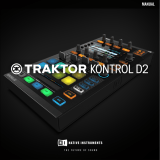 Native Instruments TRAKTOR KONTROL D2 User manual
Native Instruments TRAKTOR KONTROL D2 User manual
-
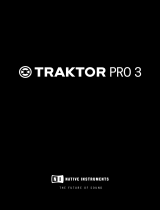 Native Instruments TRAKTOR LE 3 User manual
Native Instruments TRAKTOR LE 3 User manual
-
Native Instruments TRAKTOR KONTROL Z2 User manual
-
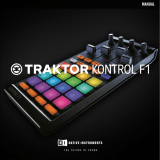 Native Instruments TRAKTOR KONTROL F1 User manual
Native Instruments TRAKTOR KONTROL F1 User manual
-
Native Instruments TRAKTOR KONTROL X1 User manual
-
Native Instruments TRAKTOR KONTROL X1 User manual
-
Native Instruments TRAKTOR KONTROL Z1 User manual
Other documents
-
Native Instruments TRAKTOR KONTROL S4 MK3 User manual
-
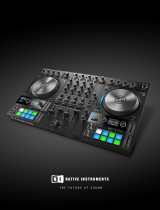 Native Instruments Traktor Kontrol S4 User manual
Native Instruments Traktor Kontrol S4 User manual
-
Native Instruments TRAKTOR KONTROL S2 MK3 User manual
-
Native Instruments TRAKTOR KONTROL S8 Owner's manual
-
Native Instruments TRAKTOR KONTROL S5 User manual
-
Native Instruments TRAKTOR KONTROL S8 User manual
-
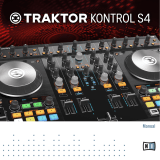 Native Instruments Traktor Kontrol S4 MK2 User manual
Native Instruments Traktor Kontrol S4 MK2 User manual
-
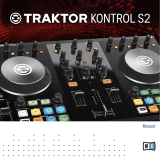 Native Instruments 22320 User manual
Native Instruments 22320 User manual
-
Native Instruments Traktor Kontrol S2 MK2 User manual
-
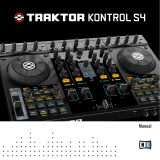 Native Instruments Traktor Kontrol S4 User manual
Native Instruments Traktor Kontrol S4 User manual













































